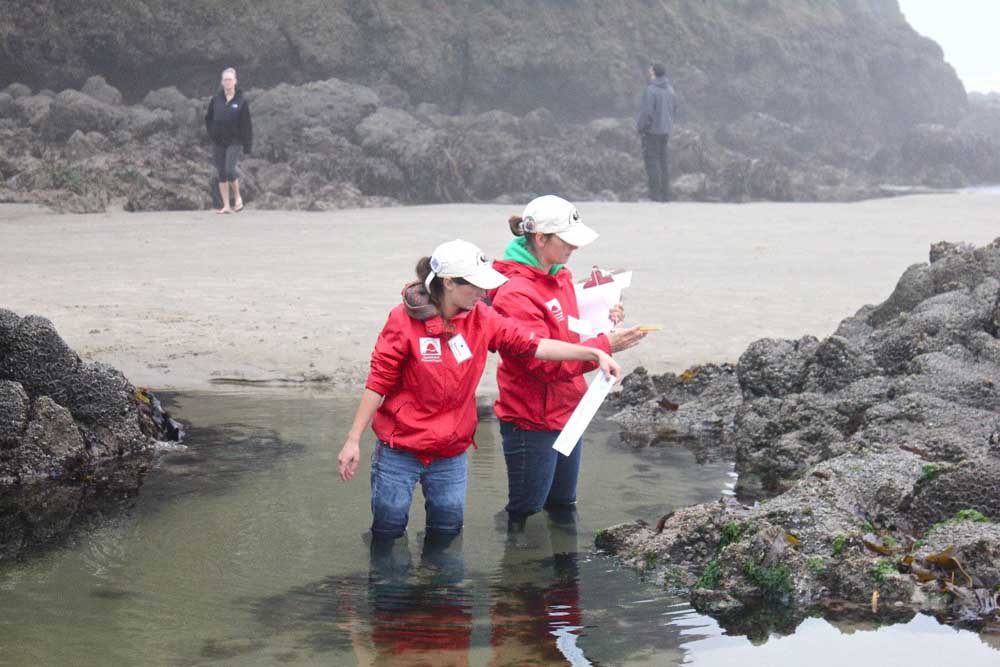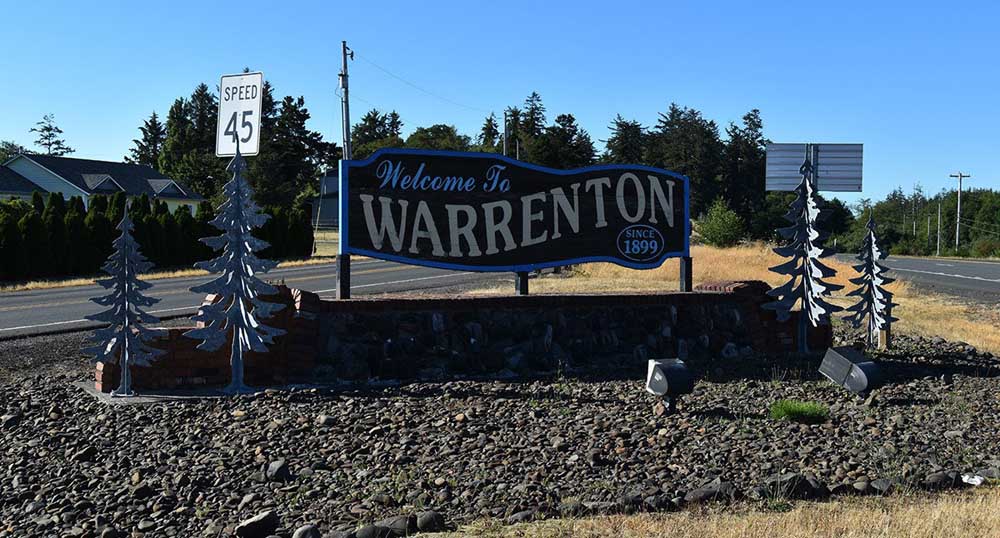Wasting disease kills most sea stars at Haystack Rock
Published 5:40 pm Thursday, September 25, 2014

- Samantha Ferber, left, Haystack Rock Awareness Program coordinator, and Alix Lee, right, HRAP education intern, survey sea stars at a designated site.
An epidemic of sea star wasting disease, which has spread along the West Coast during the past 15 months, wiped out most of the ochre sea stars at Haystack Rock during the 2014 beach season, according to Haystack Rock Awareness Program Coordinator Samantha Ferber.
Though she hasn’t finished analyzing the data, Ferber estimates that more than 90 percent of the total sea stars in the lower intertidal areas of Haystack Rock succumbed to the disease.
“We get a lot of disappointed visitors because we don’t have sea stars to show them,” she said.
Once infected, sea stars develop lesions that dissolve their tissue and spread throughout their bodies, often killing the invertebrates within a couple of weeks or even a matter of days. When lesions appear on the sea stars’ rays, a resilient few sea stars may shed the limb before it reaches their vital organs and later regrow it.
More often, however, the sea stars’ extremities become gnarled and deformed as the wasting syndrome takes hold, and the organism quickly disintegrates into a white mush.
“It’s pretty horrible,” said Ferber, who has seen sea stars’ internal organs floating in the tide pools.
First spotted in Washington’s Olympic National Park in June 2013 and appearing shortly thereafter from Alaska to the Southern California coast, this “wasting event” had already begun to reduce sea star populations at several sites in Oregon — including Devils Punch Bowl and Tokatee on the Central Oregon Coast — before turning up at Haystack Rock in early spring.
Marine scientists have seen isolated incidents of the disease before, such as a 2009 outbreak in British Columbia, according to Melissa Miner, a research associate at University of California, Santa Cruz.
But “there has never been an event this dramatic,” Ferber said. The sea stars are “dying rapidly.”
During May and June, when the wasting reached its apex at Haystack Rock, Ferber and her associates would see “sea stars degrading before our eyes,” she said, adding that most sea stars had died by mid-June.
In terms of its virulence and geographic range, this year’s wasting event, which recently hit the Atlantic Coast, is unprecedented.
“It’s the largest-scale epidemic that we’ve seen with the sea star wasting disease,” Miner said.
Whether it is a virus or a bacterial infection causing these massive die-offs is unknown, but the mysterious pathogen is definitely water-borne, Ferber said.
Until recently, the Seaside Aquarium, which pumps ocean water into its touch tanks, had scores of sea stars, some the aquarium took care of for about 30 years. Now there are almost none, said Keith Chandler, the aquarium general manager.
“We have a few ochres, but we lost all the sunflowers, we lost all the pisasters,” he said. “I’ve seen this before, but never on this scale.”
Historically, these wasting events have been associated with a period of warm ocean temperatures. That isn’t necessarily the case with this event, though.
“It persisted through winter months, during a cold-water period,” Miner said. “There are some people who think it might be exacerbated by warm water temperatures, but we’re kind of getting mixed data on that. We’ve seen it crop up in places where the water isn’t particularly warm.”
At this point, the cause of the disease and its contributing factors are simply unknown.
Beginning in July, Ferber, Alix Lee (the HRAP education intern) and Susan Glarum (an HRAP staff interpreter) started surveying the sea star population at Haystack Rock. The quarterly survey involves counting the remaining sea stars at three sites and recording the size and disease status of individual specimens.
Ferber sends this information to Miner, who works with an organization called MARINe (Multi-Agency Rocky Intertidal Network), a consortium of universities and government agencies that monitors the ecology of rocky intertidal areas along the West Coast.
“When we started to see the sea star numbers decline due to the disease,” the organization realized that bringing citizen scientists, like those at Haystack Rock, into the research pool “would be a great way to expand our coverage,” Miner said.
She added that MARINe is collaborating with disease biologists to identify the responsible pathogen.
Ferber said she is cautiously optimistic that the sea star population at Haystack Rock will be able to recover over the long run.
For some reason, the wasting disease didn’t completely decimate the juvenile sea stars. And though nearly all of the sea stars on the seastack have disappeared, a hearty handful still thrive on the Needles.
These remaining sea stars, Ferber hopes, will live long enough to reproduce, thereby passing on their survival-enhancing adaptations to the next generation.
“Only time will tell,” she said.





